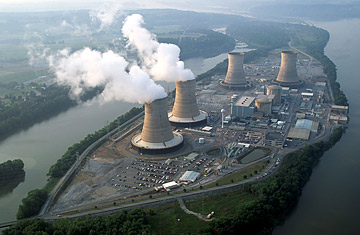
Three Mile Island Nuclear Power Plant
(2 of 11)
That, of course, was a considerable rush to judgment. But the already beleaguered nuclear power industry had clearly suffered a crippling setback. Not only are its plans for expansion now in grave doubt, but the Three Mile Island accident came at a time when President Carter was about to propose a new approach to the nation's energy problems. He had already urged a speedup in putting new nuclear power plants into operation by reducing the years it takes to pass through all of the regulatory challenges. While a case could still be made that bureaucratic indecision and delay ought to be minimized even tougher safety standards would almost inevitably be one result of the Pennsylvania breakdown. Wrote Democratic Senator Edward Kennedy in a letter to Energy Secretary James Schlesinger: "It s more important to build these plants safely than to build them quickly."
Three Mile Island also comes at a time of renewed interest in the case of Karen Silkwood, who was killed in 1974 when her car ran off a road as she was on her way to meet with a reporter to discuss the unsafe handling of highly radioactive plutonium at a Kerr-McGee Corp. plant in Oklahoma. The trial in an $11.5 million suit filed by Silkwood's family against the company is now under way in Oklahoma City.
The industry has been battered further by recent reverses in fights with Government regulators. Last January the Nuclear Regulatory Commission withdrew its endorsement of a bench mark 1974 study by about 60 scientists, headed by Norman Rasmussen. a professor of nuclear engineering at M.I.T. The report rated the chance of a serious nuclear accident about the same as the probability of a meteor hitting a major city (one in a million). An opposing group of scientists, led by University of California Physicist Harold Lewis, had convinced the NRC that the Rasmussen study, while not necessarily wrong, had insufficient statistical basis to necessarily be right. Three weeks ago, a Government task force reported to President Carter that the problem of disposing of radioactive waste from nuclear plants was far more complex than either the industry or the Government had believed. At about the same time, the NRC shut down five nuclear power plants in the East because it was not certain they had been designed so that their coolant pipes could survive an earthquake.
